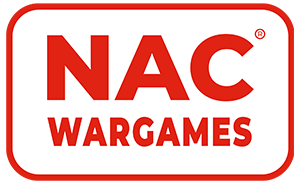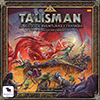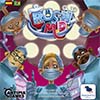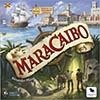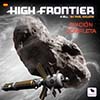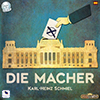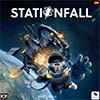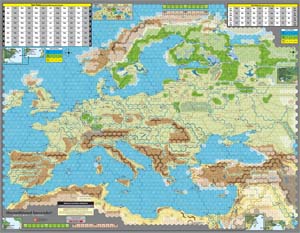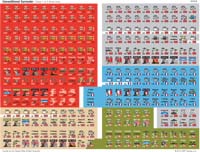Unconditional Surrender! World War 2 in Europe 2nd Print
Unconditional Surrender! World War 2 in Europe is a strategic level game covering the World War Two�s European Theater. Players control the political decisions and military forces of the Axis, Western, and Soviet factions that struggled for European dominance and survival.
With its emphasis on force projection and decision making, players focus on the big picture of managing military fronts and political opportunities. Through the use of simple mechanics and low on-map counter density, players easily handle the strategic action without a myriad of complicated subsystems or tall stacks of counters.
Though the focus is on the big picture, the game delivers historical detail. Each country in the game has an historical army level order of battle, and the relative strength of its economy and national will to fight are effectively and simply modeled. Also represented are such World War II events as airdrops, Free Forces, jets, naval evacuation, partisans, radar, heavy artillery, and ULTRA; all of which are woven into the game�s core mechanics for ease of play.
Unconditional Surrender! has 16 scenarios ranging from individual campaigns to the entire war.
DESIGN HIGHLIGHTS
Low On-Map Counter Density: The number of counters on the map is relatively low.
Simple Stacking: No more than one air, ground, convoy, or warship unit per hex.
No Factors on Counters: No combat or movement factors on counters.
Single Combat System: One combat resolution sequence and Combat Results Table covers all types of combat, yet the results differ for air, naval, ground, or strategic combat.
Integrated Movement & Combat System: Units move and fight in a combined activation.
"Use it or lose it." Economic System: Simple math with minimal record keeping
Historical or Variable Entry: Units and events can enter play using an historical or variable timeline.
Variable Politics: Most countries� belligerence and faction alliance is not predetermined.
Solitaire Friendly: Though not designed with solitaire rules, the mechanics easily allow one player to play the game.
PBEM Capable: The game can be played using PBEM software, but its mechanics may require frequent exchanges.
Easy to Modify: The relatively simple mechanics make it easy to modify the game.
GAME BASICS
Map: The map covers the European continent, and portions of Africa and the Middle East.
Certain areas on the map (such as in Scandinavia) have subtly noted hexes that are prohibited to ground units. This limits how many units may operate in those areas. So visually the map retains its hex grid, but mechanically those areas are effectively turned into a point-to-point map.
Markers: Special WW2 events and chrome (such as airdrops, jets, partisans, or ULTRA) are represented using Event markers. These markers are a combat die roll modifier or have a short rule that can be looked up when played.
Units: There are three kinds of units: Air, Ground, and Naval. A ground unit is represented at the army level, but may consist of forces ranging from a brigade to a full army. An air or naval unit is represented as a group, fleet, or other designation.
A ground unit has a full strength side and a reduced strength side. When a full strength unit suffers a loss, it is reduced. If a reduced strength unit suffers a loss, it is eliminated. Ground units are broken down into two groups: Leg and Mobile. Leg units are infantry, paratroop, and garrison forces. Mobile units are motorized and tank forces.
There are two types of air units: Fighter and Bomber. A fighter or bomber can attack an air or naval unit, or provide air support to a ground combat. A fighter can also escort or intercept an air or naval unit. A bomber can also bomb a factory.
There are two categories of naval units: Warship and Convoy. There are two types of warship units: Carrier and Surface. A Warship unit can attack, escort, or intercept a naval unit. It can also provide naval support in an amphibious invasion. A Convoy unit is used for supply or naval transport purposes.
Stacking: A hex can have one of each of the following units: bomber, convoy, fighter, ground, and warship. Stacking limits are always in effect, with few exceptions. Therefore, friendly armies could get in each other�s way.
Movement: There are two kinds of movement: Strategic and Operational. Strategic allows a unit to move any distance along a contiguous rail or road. Operational allows a unit to move up to its movement allowance.
There are no movement allowance numbers on the counters. There are only two values to remember, eight and ten. Leg ground units have an allowance of eight, and every other kind of unit (including air and naval) has an allowance of ten.
Combat Resolution: The game uses a die result comparison system with no combat factors on the counters. There is no factor counting or searching for just one more attack factor. Advantages due to troop quality, equipment, tactical doctrine, etc. are handled through combat die roll modifiers (DRM).
All types of combat follow the same resolution sequence and utilize the same Combat Results Table (CRT). The attacker and defender each roll a six-sided die and each adds its own specific DRM based on the units involved and the type of combat fought. For example, a British air or ground unit has a +1 DRM, but a British naval unit has a +2 DRM. Each side�s modified die roll result is then cross-referenced on the CRT. The found CRT result is then applied based on the type of combat fought.
Unit Activation: The game does not use a �Move everyone; fight everyone.� system. Instead, a faction activates one unit to perform an �Action� which allows it to move and/or fight. Once it completes that unit�s activation, the faction activates another unit. Units can be activated in any order. For example, the Axis faction activates an air unit to attack an enemy air unit. It then activates a ground unit to move and fight. This is followed by an airdrop and then with an air unit attacking an enemy naval unit.
Given a unit must activate and complete its action before another unit activates, players operate under some fog of war. Offensively, do you risk having one of your armies cut off because its success and advance into enemy territory may not be achieved by supporting armies, or do you advance more slowly across the front to protect every army�s flanks? Defensively, do you retreat and reform your lines, or counterattack against an enemy�s broken front line?
Sorties: The effectiveness of an air or naval unit is tracked using Sorties markers, valued at 1 through 6. A unit with no Sorties is fully effective. A unit marked with 6 Sorties cannot be activated to perform any action. As an air or naval unit conducts actions or is involved in combat, it will add Sorties to its total. Having Sorties reduces the number of future actions a unit can perform and decreases its combat performance. A unit can only remove a few Sorties from its total each turn, so a heavily used or engaged unit takes time to recoup to full effectiveness.
Economy: Using simple math, the game�s economic system represents each country�s relative economic strength based on a review of its GDP, historical activity, and game play balance. Each country contains one or more factories, which generate one or two production points each. Most countries generate only 1-3 production points per turn, while larger countries have numbers in the 20s-30s range. Production points are used to activate, provide replacements to, or mobilize units.
The game has a �Use it or lose it� system which means production points are not carried over from turn to turn. So there is no hording of production to achieve extremely high levels of activity and replacements at the same time.
Strategic Warfare: Strategic warfare abstractly represents trade wars, U-boat activity, strategic bombing, partisan activity, etc. Strategic warfare impacts the number of factories a major country has to generate production points.
Important strategic situations are represented through combat die roll modifiers. For example, an Axis port on the western coast of France (such as Brest) will add a positive DRM to the Axis combat roll.
Diplomacy: The game takes an unscripted approach and simulates this chaotic period by creating tension in a player�s political decision making. Players are faced with the choice of either trying to gain their own allies or preventing the enemy from gaining them. The game uses a �Diplomacy Cup� into which certain Event markers are placed. A faction may choose to randomly pull a marker from the cup and apply its political event, or it may instead put already pulled markers back into the Diplomacy Cup. A faction can only do one of these two choices per turn, and it can only do that choice once per turn. The political events may influence the alignment of a neutral country or cause territorial changes.
Due to the low number of Event markers, each pull from the cup changes the odds of future pulls. Players have to decide if they will pull a marker in the hopes of influencing a country in their favor, or putting markers back into the cup to reduce their opponent�s odds of influencing a country. The dilemma is that pulling markers might increase the opponent�s odds of picking a good marker, while putting markers back sacrifices a player�s own chance of pulling a good marker.
GAME TURN / SEQUENCE OF PLAY
A monthly turn is composed of phases. Rather than one faction taking its entire turn before the next faction does, each of the three factions (in Axis, Western, and Soviet order) completes one phase before moving on to the next phase in the sequence of play.
Weather Phase: The weather (Fair, Moderate, or Severe) for each of the four weather four zones on the map (Cold, Mild, Warm, and Desert) is determined.
Declare War Phase: Each faction may declare war on any number of neutral countries. The country�s faction alliance is then determined and its counters are set up.
Economy Phase: Each active country determines its production points for the turn.
Strategic Warfare Phase: Strategic combat is fought between the Axis and Allied factions.
Strategic Movement Phase: One supplied air or ground unit may move any distance along a contiguous rail or road.
Operations Phase: The Operations Phase is when air, ground, and naval units move, fight, and check if they can trace a supply line. It has two Sub-Phases: Actions and Supply Check.
Actions Sub-Phase
Airdrop/Partisan Action: An Airdrop and Partisans marker is placed in a hex.
Air Action: An air unit is activated to move, bomb a factory hex, support a ground combat, attack/intercept an enemy air or naval unit, or escort a friendly air or naval unit.
Ground Action: A ground unit is activated to move or perform an amphibious invasion. To activate a ground unit, a faction must spend the production points of that unit�s country. Very simply, it costs one production point to activate a Leg unit or two points for a Mobile unit.
As a ground unit moves it may initiate an attack against an enemy ground unit. Attacking costs additional movement points (more so in bad weather conditions). Therefore, a unit that engages in combat will move less distance over time than a unit that does not fight.
Attacks come in two forms, Mobile and Assault. A Mobile attack is resolved immediately during that unit�s activation. Only the activated, moving unit can attack at that time. As long as an activated unit has a sufficient movement points available, that unit can continue to move and attack (i.e. multiple times) in the same activation.
An Assault attack is resolved at some later point in the faction�s Operations Phase (after the unit�s activation ends). An Assault allows multiple armies to attack a single defender at the same time. Higher quality armies are more effective at Mobile attacks, while poorer armies try to even things out with sheer numbers in an Assault.
Naval Action: A naval unit is activated to move, trace overseas supply, perform/support an amphibious invasion, attack/intercept an enemy air or naval unit, or escort a friendly air or naval unit.
Supply Check Sub-Phase: Each unit checks to see if it can trace a supply line back to a supply source. If it cannot trace a supply line, its supply state drops one level.
To trace supply across a sea zone, a convoy unit must be activated. If used to trace supply, a convoy will add Sorties to its total. In addition, an enemy faction can intercept that convoy during the supply line trace. Therefore, a convoy that is used by many armies to trace supply, or is constantly intercepted, will quickly hit 6 Sorties and be unable to activate again (which means it can�t trace supply). Places like Africa have a limit to how many armies can be supplied there based on available convoys and air/naval superiority.
No Supply Phase: Unsupplied units are reduced in strength or eliminated.
Replacements Phase: Factions pay production points to increase reduced strength ground units to full strength or remove up to two Sorties each from air and naval units. A unit can be improved only once per turn. Costs range from 1-5 points. For ground units, it is the same cost as to activate them in the Operations Phase, i.e. one for Leg, two for Mobile.
Upgrade Phase: Units on the map may be replaced by Upgrade units. For example, a USSR �Guards Tank� army replaces a USSR �Tank� army. The Upgrade mechanic reflects significant improvements in troop quality and/or quantity, e.g. USSR infantry armies were designated as �Guards� after numerous battles and becoming motorized. To ease play, the historical numeric designation does not matter.
Mobilization Phase: Factions pay production points to take units in their Faction Card�s Mobilization box and place them onto the map. This phase is when new or eliminated units are brought into play. Costs range from 1-5 points; the same number of points that it costs to improve such a unit in the Replacements Phase.
In addition to mobilizing units, a faction may buy its faction�s Surprise Attack marker (the most expensive item in the game, which only a few countries can afford). A Surprise Attack marker provides its faction a positive combat DRM for all within its range, and is required in a Sea Zone in order to launch an Amphibious Invasion there. Once a Surprise Attack marker is used, it is set aside and must be purchased again.
Diplomacy Phase: Factions pay production points to either randomly pull a marker from the Diplomacy Cup and apply its political event, or it may instead take already pulled markers and put them back into the Diplomacy Cup.
Potential events are:
No Event: Nothing happens.
Area Seized: The USSR has territory ceded to it from a neighboring country, e.g. the Finnish Karelia area.
Political Success: A neutral country�s political leaning is adjusted one level in favor of the faction that pulled the marker. This may activate a neutral country to join that faction.
Political Failure: A neutral country�s political leaning is adjusted one level in favor of an enemy faction. This may activate a neutral country to join the enemy faction applying the result. This represents negotiation breakdowns, political coups, allies acting independently (e.g. Italy attacking Greece), etc.
Victory Check Phase: Check if the scenario�s victory conditions have been achieved.
End of Turn Phase: The Turn marker is advanced one turn. Counters in the new Turn box are placed in their respective locations. In addition, units that were eliminated in the last turn are placed in their Mobilization Box so they may be rebuilt again this turn.
COMPONENTS
� 840 counters on 3 countersheets
� Two 22"x34" maps
� Three 11"x17" Player Aid Sheets
� Three 8.5"x11" Faction cards
� Two 8.5"x11" Flowchart cards
� Rulebook
� Playbook
� Three six-sided dice
YA DISPONIBLE LA TRADUCCI�N DEL LIBRO DE REGLAS, LIBRO DE JUEGO (ESCENARIOS) Y TABLAS

 Comprando este juego podrás ganar OcaPoints.
Comprando este juego podrás ganar OcaPoints. 








